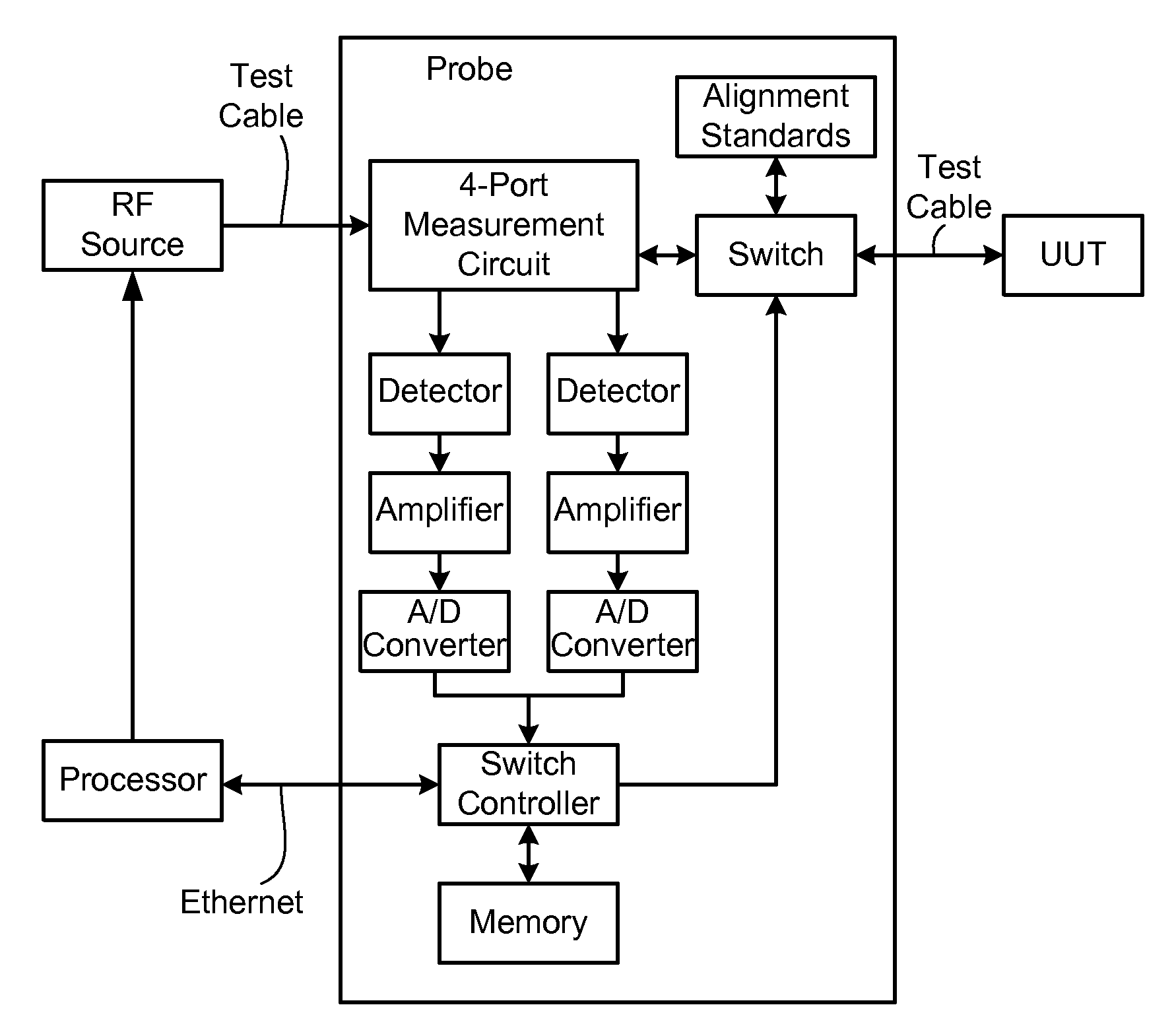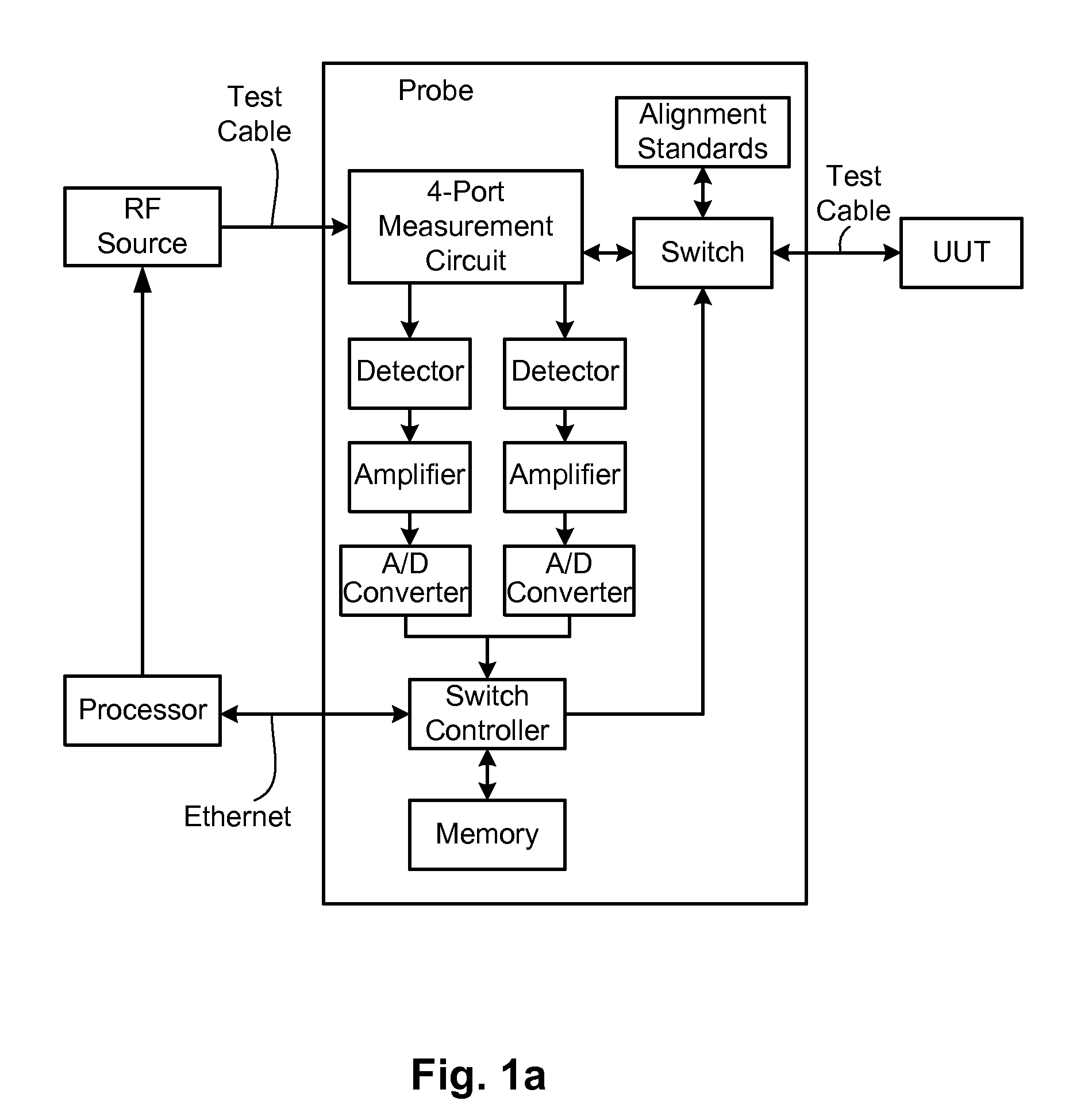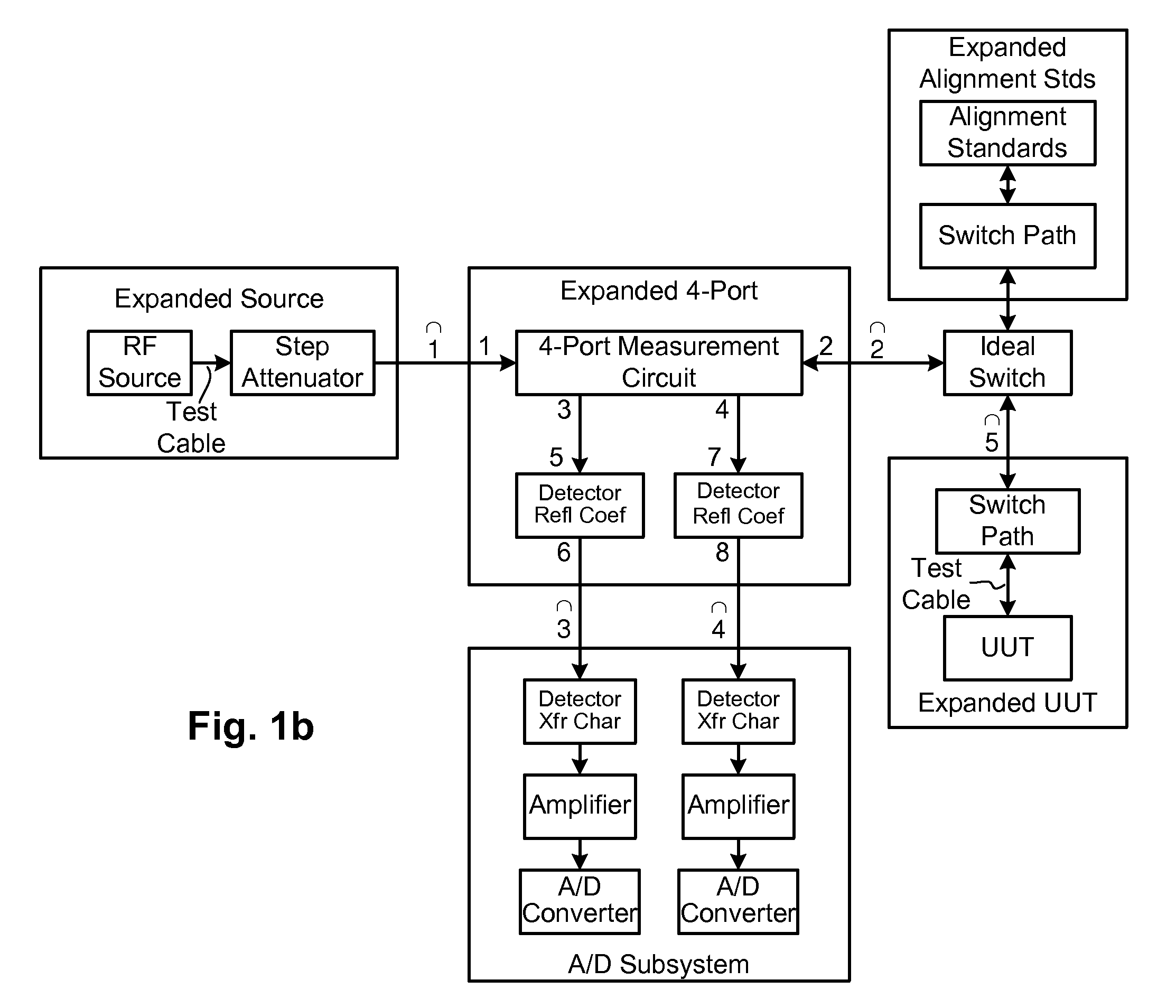Distance-to-fault measurement system capable of measuring complex reflection coefficients
a technology of distance-to-fault measurement and reflection coefficient, which is applied in the direction of pulse reflection method, resistance/reactance/impedence, instruments, etc., can solve the problems of reducing the performance of the communication system, and affecting the reliability of the transmission system
- Summary
- Abstract
- Description
- Claims
- Application Information
AI Technical Summary
Benefits of technology
Problems solved by technology
Method used
Image
Examples
Embodiment Construction
[0021]Techniques are disclosed for computing distance-to-fault (DTF) in communication systems. The techniques can be embodied, for instance, in a DTF system that provides a multi-port probing device and DTF functionality, including computing distances to faults and the fault magnitudes. In addition, the DTF system is further configured with the ability to accurately measure complex reflection coefficients of the UUT, and / or return loss of the UUT. As is known, the return loss of the UUT is easily computed from the complex reflection coefficient (i.e., Return loss=1−Ireflection coefficient).
General Overview
[0022]In order to allow the DTF system to accurately measure the complex reflection coefficient of the multi-port probing device, the system is programmed or otherwise configured to take into account various probe scattering parameters (s-parameters) that are ignored by conventional DTF systems. In particular, such conventional systems approximate these s-parameters as being of zer...
PUM
 Login to View More
Login to View More Abstract
Description
Claims
Application Information
 Login to View More
Login to View More - R&D
- Intellectual Property
- Life Sciences
- Materials
- Tech Scout
- Unparalleled Data Quality
- Higher Quality Content
- 60% Fewer Hallucinations
Browse by: Latest US Patents, China's latest patents, Technical Efficacy Thesaurus, Application Domain, Technology Topic, Popular Technical Reports.
© 2025 PatSnap. All rights reserved.Legal|Privacy policy|Modern Slavery Act Transparency Statement|Sitemap|About US| Contact US: help@patsnap.com



